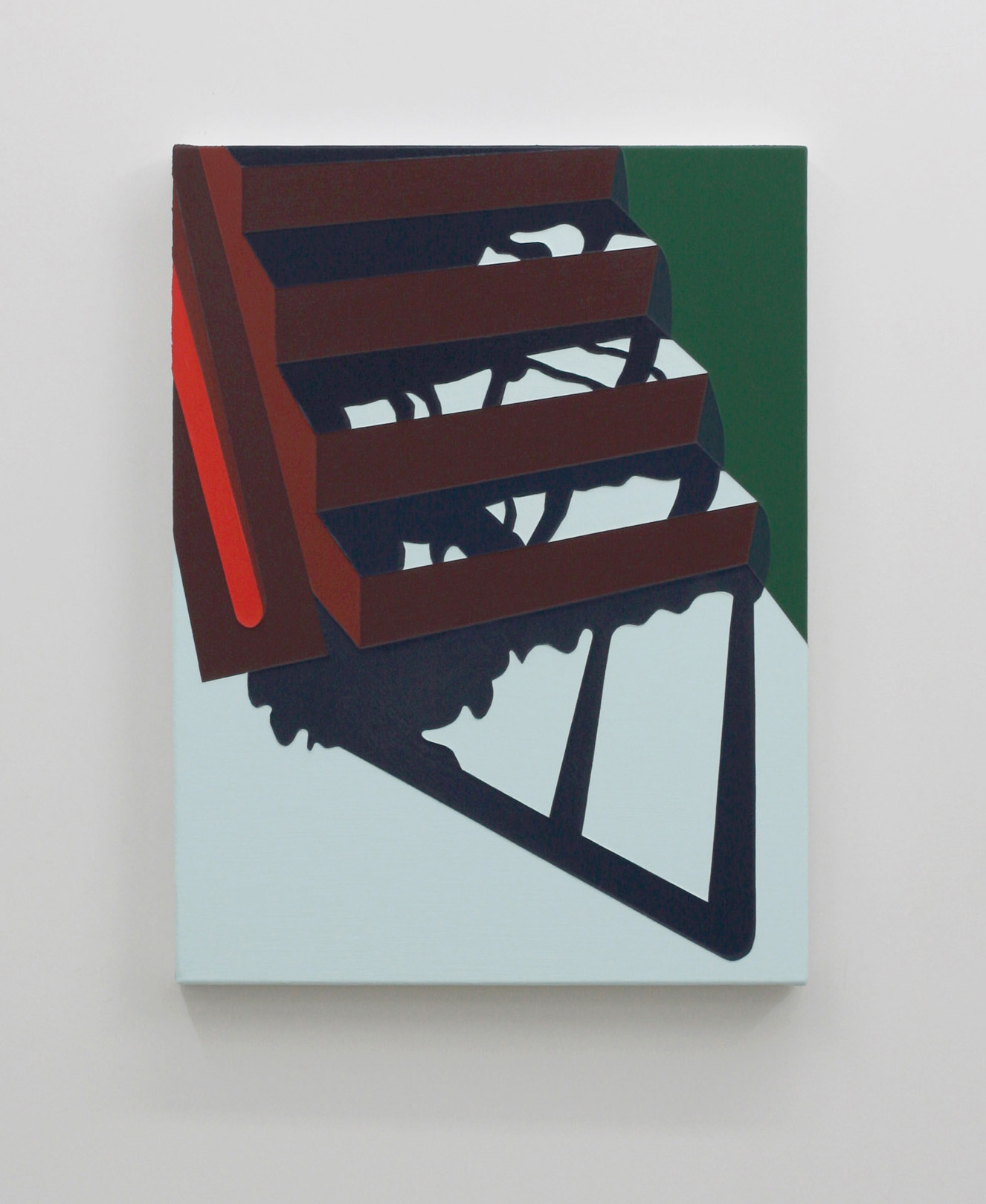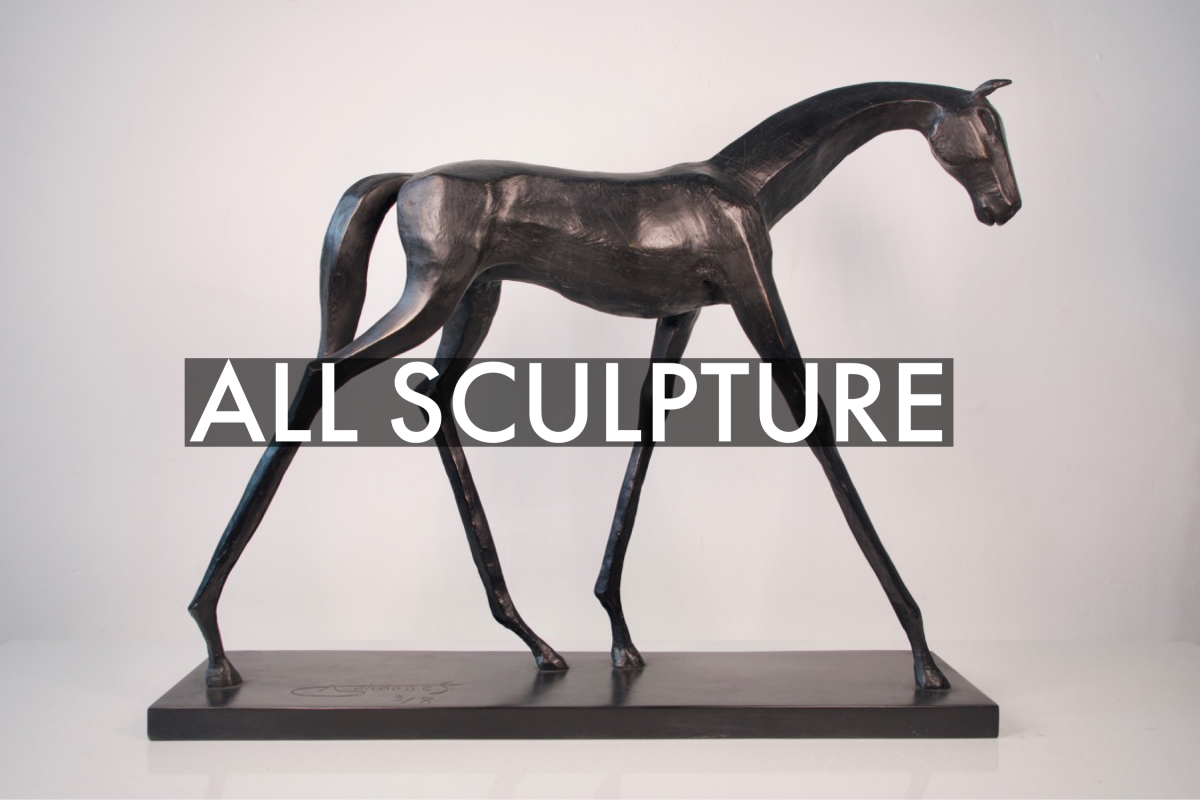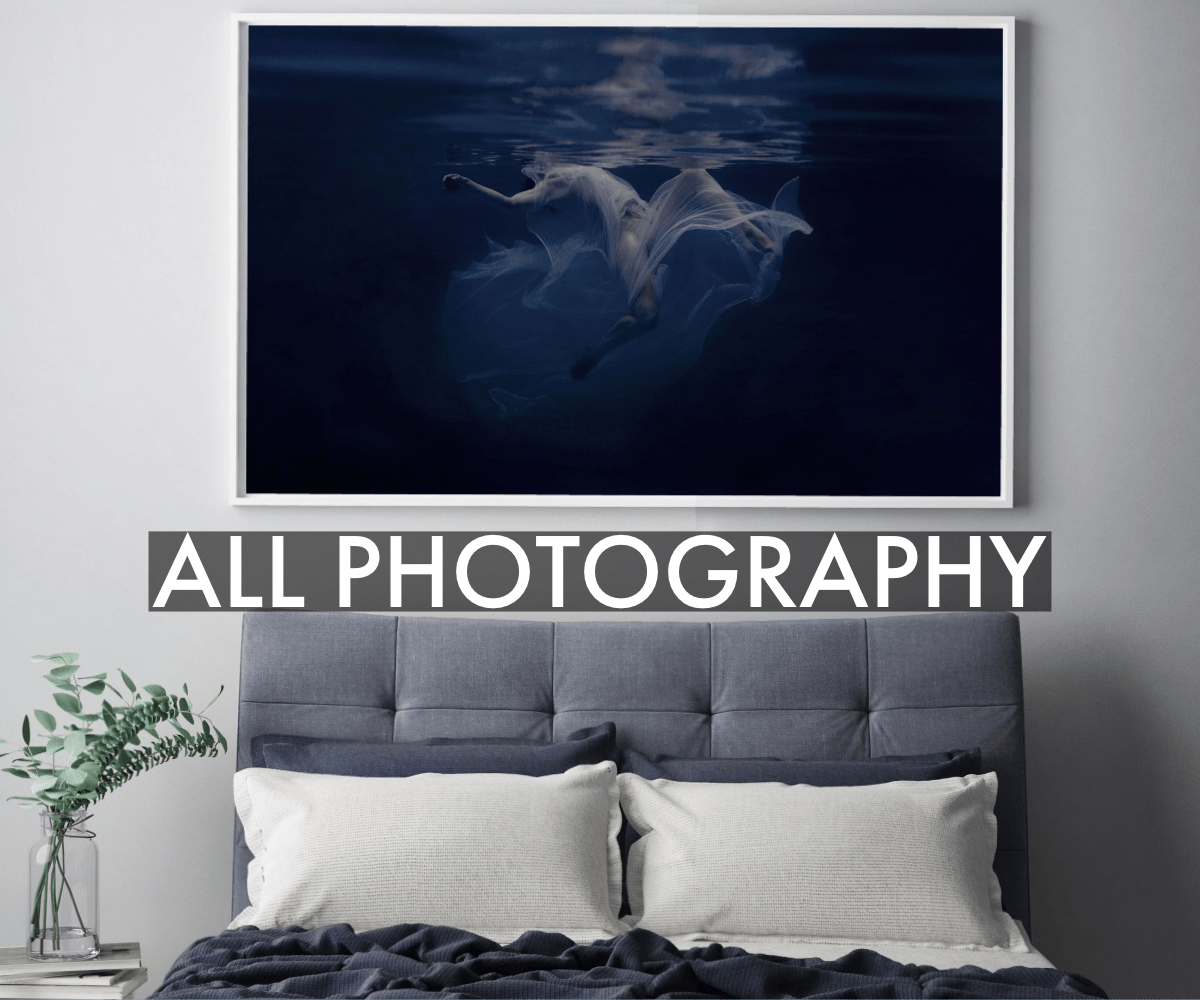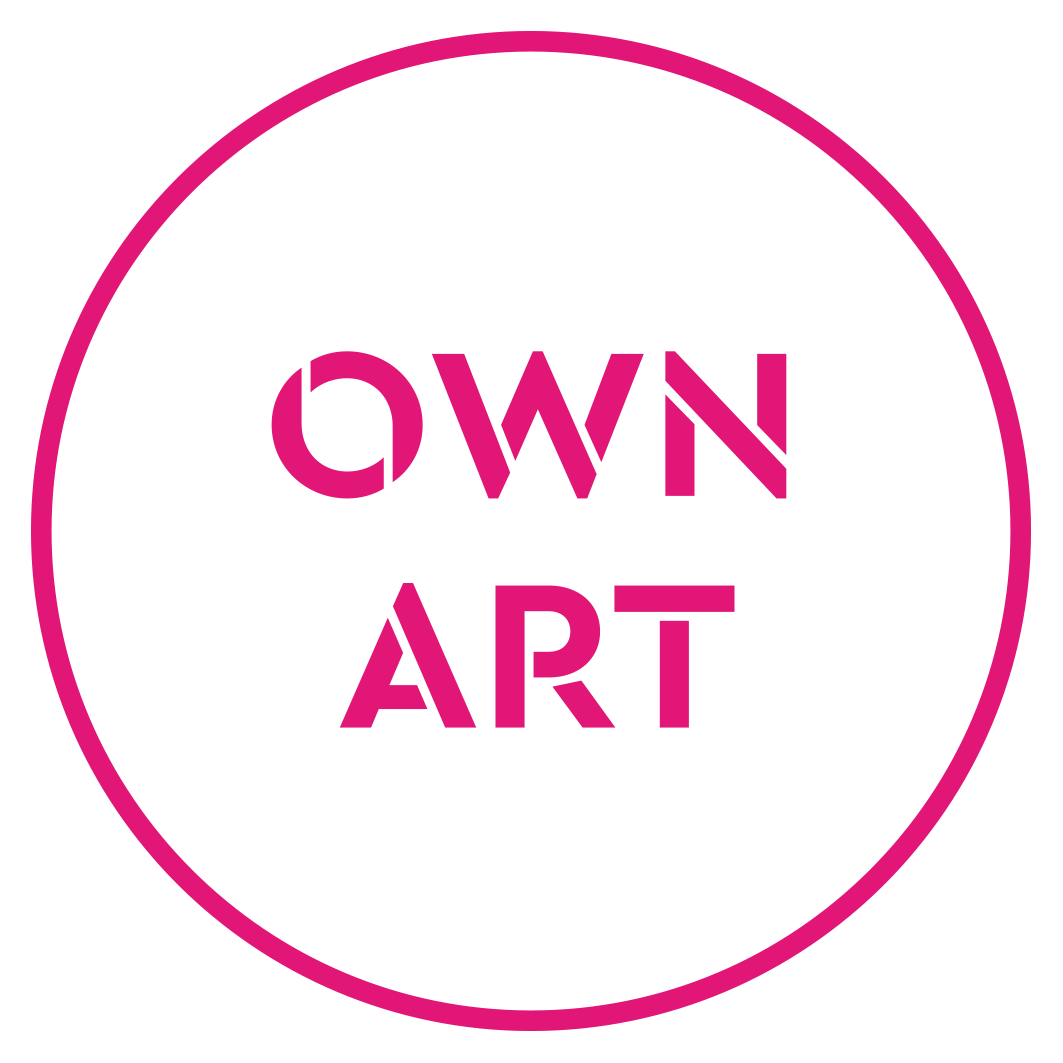Meet the artists that have taken over our Instagram every Thursday in the past month! Showcasing exclusive interviews with Lyra Morgan, Katy Gardner, and Katherine Lubar.
LYRA MORGAN
1) Walk me through a typical day in the studio for you?
LM: I prepare for the day’s painting in quite a ritualistic way, this helps me to get rid of any thoughts or distractions that might get in the way of being creative. I’ll get myself hot water to keep me going as once that first blob of paint goes on the canvas, it could be a few hours before I stop for even a tiny break. There is usually a bag of Minstrels to dip into too; crucially it is within arm’s reach of where I work on the floor. I usually work on at least 2 pieces in the same session. While the plain base layers are drying, I mix the colours for the day’s palette; choosing them based on ‘the mood’ of the water I want to depict. I love music but when I paint, I prefer silence so I can get totally ‘in the zone’. I am in ‘do not disturb’ mode for the duration. I paint in a state that is a combination of calm, energy, playfulness and exploration. It is essential to work with the paint while it is still wet and malleable (there is a perfect consistency dependent on time and temperature) and sometimes this is on very large canvases, so I usually have to be quick. It’s a good job I do yoga as I end up stretching and moving around the canvas for hours, it is a subtle workout and one that I am not really aware of until I have finished. I get lost in the painting process; awareness of my own physicality takes a back seat. In between layers drying, I will grab myself something to eat, paint the sides of finished works, and maybe take photos of finished works.
2) What is something viewers might not know about your work?
LM: I’ve never used actual paint brushes and I sometimes go searching in kitchen cupboards to find new ways of working with paint. A squeegee is my friend.I consider myself to be a colourist. The forms and textures are inspired by nature (mostly water) and my artistic ideas are translated with gravity, colour-dragging techniques and building texture - giving each painting a multi-layered look. When I walk into my studio, it is like coming home. And water is my sanctuary. To me, painting is like swimming, it comes naturally to be immersed in it, to flow with it; I surrender to it and let it take me somewhere new. And it always does. I love scuba-diving in the calm, serene 'big blue' and have been lucky enough to have been so close to a manta ray that I cried tears of joy in my mask at the sight of her grace; totally forgetting that I was floating in a very deep sea!Just like the oceans and the skies, colour seems to be infinite - no one colour is the same as the next. There are perceptible and imperceptible differences. I truly believe that colour has the power to change a room. To change how we experience our world. Art has always played a big role in my life, even at an early age drawing murals behind the back of the sofa, painting my first bike as a Friesian cow and at 13, my mum letting me paint my entire room as a lake with an island in the middle.
3) What is the most challenging part of your process as an artist and what is most rewarding?
LM: To be honest, (and this probably sounds cheesy) but there isn’t really a challenging part to my artistic process as there is an energized serenity and ‘at oneness’ about it. In the early days, there was the ‘inner critic’ that would fret about not being good enough or getting ‘artist’s block’ but fortunately those feelings are a rarity now. I’d love to be able to work on much bigger canvases and in a much larger studio one day, as it would be amazing to represent water on that scale. I expect I have been influenced by Rothko and Monet on that front. One practical challenge for me in terms of viewing my work online is that the detail and true nature of the pieces doesn’t always get conveyed as they would in ‘real’ life. Clearing up can be lengthy as it includes sponges, jars, paint movers, spoons plus my feet, arms, hands, face, and legs! It is hugely rewarding when people connect with my work, when they too find it ‘takes them somewhere’. The most rewarding part of my practice is the actual process. It is also good to see a ‘work in progress’ with fresh eyes the next day, to start to feel that it is on the way to being its own entity.
4) Is there any advice you have for artists/creators during this difficult time?
LM: Imagine a world without colour, it is almost impossible to do but if you can……it is a great reminder of what a huge difference artists, poets, musicians etc make to our world. We sometimes go unnoticed and take ourselves for granted, but we would be missed if we weren't here. We make a positive difference by changing interactions with spaces, by being ‘windows’ into meditations, offering perspectives and reflections, by adding colour when times are grey. The world needs us to keep on making beautiful contributions to it, to reveal the rainbows in stormy skies. Being an artist is not always the easiest path to follow but being true to ‘ourselves’ and our creative spirit is the path of authenticity, of fulfillment, of balanced sensitivity, of an inner peace.
KATY GARDNER

1) Walk me through a typical day in the studio for you?
KG: I jump between a few artworks throughout the day, as I find this allows my ideas to brew and prevents me from reaching a standstill. Recently, I have enjoyed doing a bit of painting, followed by some lino carving, or canvas stretching- a mixture of tasks that helps my mind wander in the most productive way. Afternoons always seem to be the most productive part of my day, where my excitement and productivity reaches a peak.
2) What is something viewers might not know about your work?
KG: No matter how an artwork starts, natural formations always seep into the piece. I think that growing up in the countryside has deeply embedded the idea of trees and landscapes being a place of wonder and escape in my mind and hence in my work.
3) What is the most challenging part of your process as an artist and what is most rewarding?
KG: The most challenging part of the process is beginning a piece and finishing it; they both have a weight and responsibility to them. I like getting messy in the middle and slowly finding the images within the paint. The most rewarding part is seeing artwork up on the wall and knowing that the image came from within, and in some abstract form, just makes sense.
4) Is there any advice you have for artists/creators during this difficult time?
KG: I like the phrase ‘throw spaghetti against the wall and see what sticks’. Not everything will come out as planned, but that is okay as long as you keep on making.
KATHERINE LUBAR

1) Walk me through a typical day in the studio for you?
KL: Most days I get to the studio around 1 (I am not an early riser!) and I start by doing a coat on an already taped up painting. It takes a while for the paint to dry enough between coats, so I usually do a coat when I first arrive, and then last thing before I leave at the end of the day. In-between, I might start taping up another painting, put a stretcher together, prime a canvas, or work on a sketch for a new painting. In addition, I have copious amounts of tea, and perhaps a quick chat with another artist in the building. I generally leave around 7.30 to go home.
2) What is something viewers might not know about your work?
KL: Everything I make is based on a shadow or light pattern I have seen somewhere out in the world or on TV. I then spend some time doing drawings to get the composition right, and then quite a lot of colour sketches before deciding if I can make it into a painting. The painting itself can take many months, sometimes up to a year, as I do many layers of paint on each section, so as to build up a kind of texture.
3) What is the most challenging part of your process as an artist and what is most rewarding?
KL: Sometimes it can be very frustrating if things aren’t going right with a painting, although occasionally mistakes can lead to interesting outcomes. I think what I find most challenging is the amount of time it can take me to finish a painting, compared to other artists, which means I can’t always apply for things that ask for work within the last year or two. The most rewarding is being able to work with colour every day – I love colour and being able to create things with it. I also love the idea that you can make something from nothing as an artist; you start with all of these separate ingredients (including the idea) and create a new object that never existed before.
4) Is there any advice you have for artists/creators during this difficult time?
KL: I think the most important thing is to stay true to your own voice, and to what interests you the most and just keep following that, as it will lead you to where you need to be. The other thing (which I’m still trying to learn myself) is to try not to care too much what other people think of your work – as no one else sees the world in the same way, so always take artistic advice with a pinch of salt. And just persevere. Making work and having a creative practice is a great way to create meaning in this difficult world.








